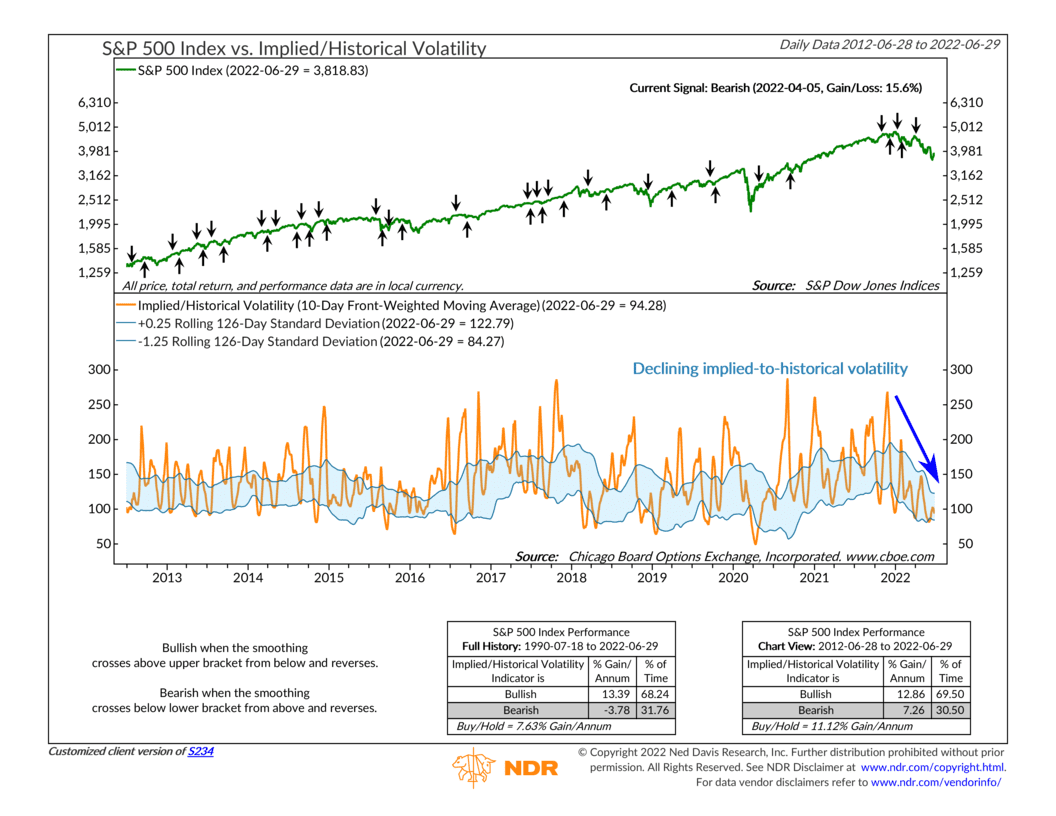
Volatility comes in many different forms. But in the stock market, there are two commonly looked at measures of volatility that investors focus on.
The first has to do with the VIX index or the so-called “fear gauge” of the stock market. It’s a forward-looking measure that calculates the implied volatility of stocks based on call and put options for the S&P 500 stock index. In other words, it measures what investors think volatility will be in the future.
By contrast, the second measure looks at historical volatility, or what has already happened in the stock market. Typically, this is calculated by taking the annualized standard deviation of daily returns for a stock market index—like the S&P 500 index—over a specific period, such as 21 days (one month of trading). This will show how much stock prices varied around the average during that time.
The thing is: the two measures don’t always agree. Sometimes implied volatility—what investors think will happen—varies considerably with what has already happened (historical volatility).
But that’s where the opportunity lies. Investors are human. And humans tend to make systematic errors when forecasting the future. The crowd, when it reaches an extreme opinion, is often wrong. Therefore, we can use these two volatility measures to our advantage when managing risk.
Our indicator above compares the two stock market volatility measures against one another by simply dividing implied volatility by historical volatility and then smoothing that measure by ten trading days. This is the orange line on the bottom clip of the chart. We also include rolling 126-day standard deviation bands around the measure to quantify where the extremes are.
For example, when the indicator rises above the upper band, it tends to indicate expectations of high volatility and bearish sentiment. This usually occurs during market declines. And since the ratio of implied volatility to realized volatility tends to peak when fear is at its greatest, a reversal below the upper band tends to mark a turning point for the market. This is a bullish signal.
The same is true in reverse. Low readings from this indicator are associated with flat or rising markets and tend to indicate complacency among traders. As the saying goes, it’s always calmest before the storm. Likewise, stocks are more prone to selloffs when no more pessimism is left in the marketplace.
Another way to think about it is that, after the stock market has already sold off, it’s a lot harder for it to make a low until we see a spike and reversal in implied-to-historical volatility.
Take this year as an example. As I note on the chart, the indicator has been trending lower and lower all year, a sign that investor fear has not yet spiked relative to the actual volatility in the market. The dynamic is similar to what played out in the 2000-2002 dot-com bear market, where there were no big sudden shocks but sustained high realized volatility instead.
As the performance boxes at the bottom of the indicator show, sell signals—like the one we are currently on—are accompanied by negative annualized returns for the S&P 500 index, based on the history of this indicator. So, until we can get a surge in implied volatility relative to historical volatility, it will likely continue to be a rough ride for the stock market.
This is intended for informational purposes only and should not be used as the primary basis for an investment decision. Consult an advisor for your personal situation.
Indices mentioned are unmanaged, do not incur fees, and cannot be invested into directly.
Past performance does not guarantee future results.
